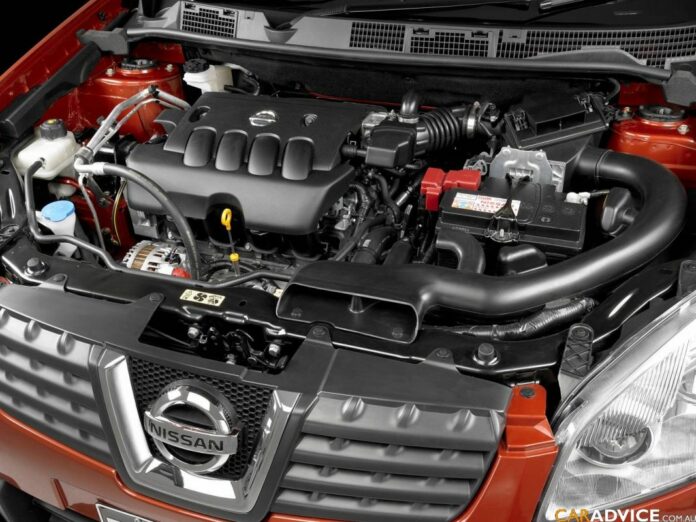Complete engines have cylinders, and depending upon the make and model of the vehicle, the amount of cylinders vary. An engine can have four, six, or eight cylinders. There are three different ways in which the cylinders can be arranged within an engine, and they are: flat, inline, or V. Understanding the different types of engines and some basic information on what makes them tick can help many individuals choose the right one for them.
There are different advantages to each type of cylinder arrangement, such as their shape, how smoothly they operate, and how much they cost. Even though the cylinder is a very important part of an engine, there are other parts that are required for it to work properly. The table below lists information about the main parts of an engine and how each part functions.
Engine Parts |
Function |
|---|---|
| Spark Plug | Ignites mix of air and fuel by giving off spark to allow combustion; timing of spark is essential in combustion process |
| Engine Valves | Two valves that work together; one takes in an air and fuel mixture while other expels exhaust; valves must be closed in chamber where combustion and compression take place |
| Piston | Piece of metal that has cylindrical shape; moves in upward and downward strokes within the cylinder |
| Piston Rings | Seals off area between cylinder’s inner edge and outer edge of piston; prevents leakage of fuel and air mixture from making way into sump to during compression and combustion phases; prevents oil from entering sump |
| Connecting Rod | Allows the crankshaft to be connected to the piston; both ends may rotate to allow proper movement of pistons |
| Crankshaft | Changes upward and downward strokes of pistons into a circular pattern to allow pistons to perform their function |
| Oil Sump | Also known as the oil pan; surrounds the crankshaft |
In order for the engine to run properly, all of these features must be working efficiently. New complete car engines are the best types to purchase on most occasions if the price is right; however, there are also many used complete engines that work just as well.
Features for Increased Power
If an engine is replaced for the purpose of adding more power to the vehicle, there is some additional information that is worth knowing. Many remanufactured complete car engines are upgraded with additional features that increase power or speed. This is beneficial to new owners because they do not have to invest time in performing the upgrades themselves. Understanding what features give an engine more power is helpful in the process of this type of upgrade.
Cylinders
One way to get an engine with more power is to find one that has either more cylinders or larger cylinders. The suggested limit for cylinders is 12. Having more cylinders or larger cylinders increases displacement and allows more gas to be burned in turn, giving the engine more power. Also, by increasing the amount of air and fuel within the cylinder, the power of the engine is increased. This can be accomplished by having an engine that is equipped with a turbocharger.
Compression Ratio
Increasing the pressure of the fuel and air combination can be tricky. If these elements are compressed too tightly, there is always a risk that before the spark plug can ignite it, it may spontaneously combust. Keeping a balanced ratio at the upper limits without going over them can alleviate this problem. Using fuels with higher octane content can guard against the early spontaneous combustion.
Intercoolers
The more compressed air becomes, the hotter the temperature of the air rises. The more air that is in the cylinder, the more power an engine has because of the greater combustion process allowed. Hot air takes up a lot of room and therefore decreases the power. One solution to this problem is to have an engine that is equipped with an intercooler. An intercooler is simply a radiator that helps to cool off the air that passes through it and reaches the cylinder. Many people who have engines that are equipped with either a supercharger or a turbocharger have an intercooler for this reason.
Features for Improved Air Flow
Improved air flow is one way of getting more power out of an engine. There are a few ways that this can be accomplished. Adding larger air filters makes a big difference when it comes to allowing more air get where it needs to go. Having two air intake valves in each cylinder helps to replace the air that is lost when the pistons perform their intake stroke. When a piston moves in that downward motion, it can create air resistance, thus robbing power from the engine. Polished intake manifolds are popular on engines for newer car models because this type of manifold is also useful in decreasing air resistance as well.
Exhaust Valves
The addition of an extra exhaust valve is one more way that an engine can realise more power. When exhaust is able to escape more easily, the power is increased because of the decreased air resistance. Engines that have a second exhaust valve added to the cylinder, also known as dual exhaust engines, are ones to look for if this issue is a problem with a previous engine. Headers, free flowing mufflers, and larger tail pipes are also engine features that decrease back pressure that is often created by air resistance.








